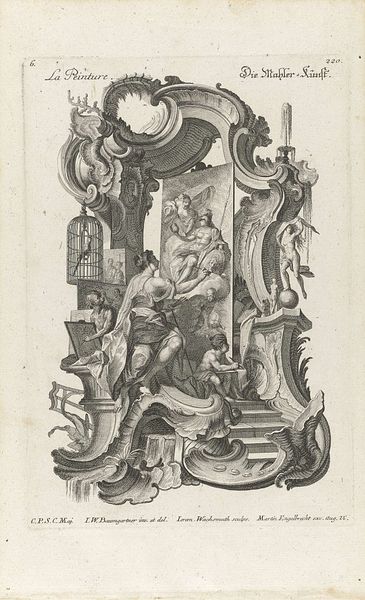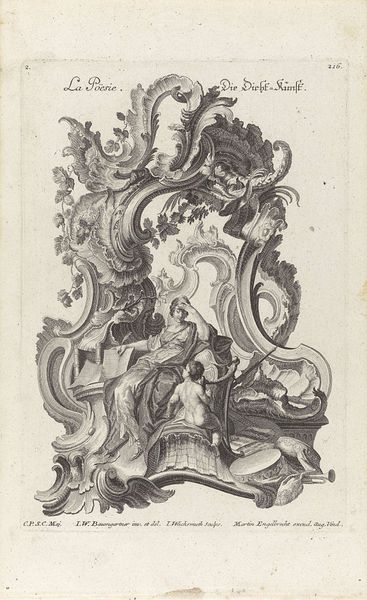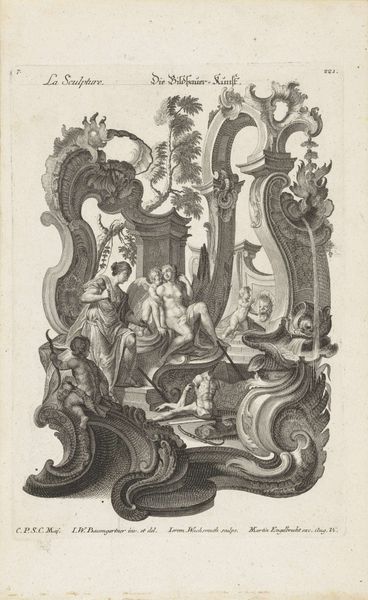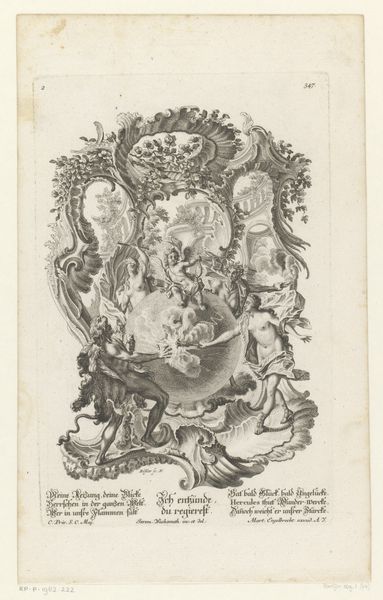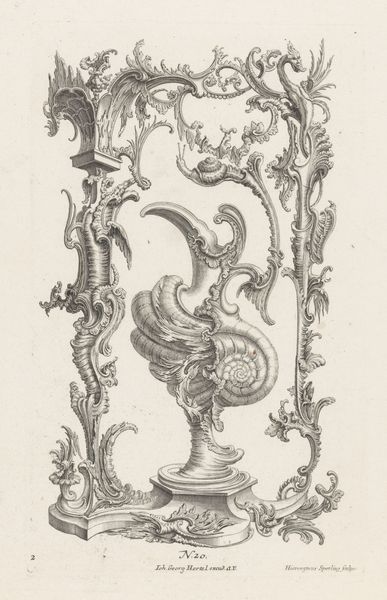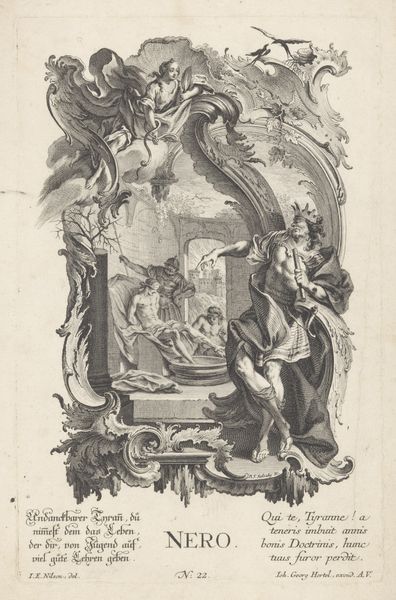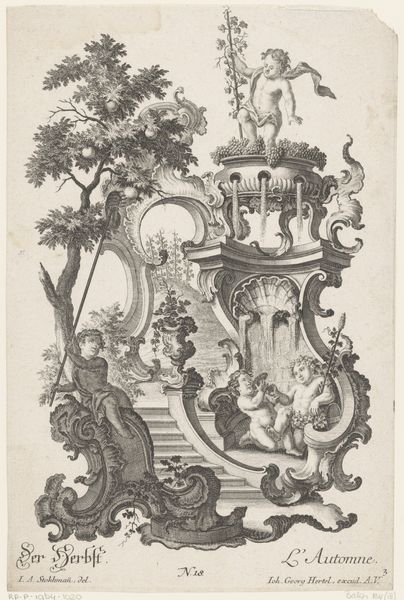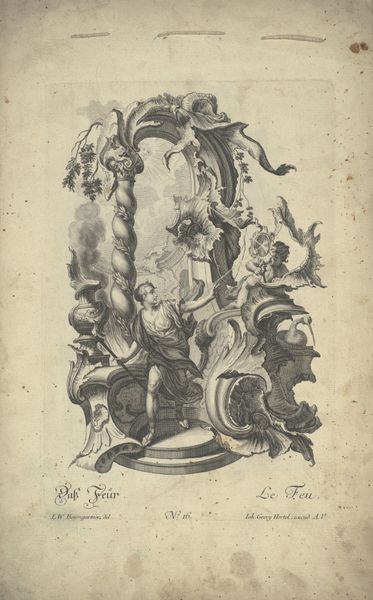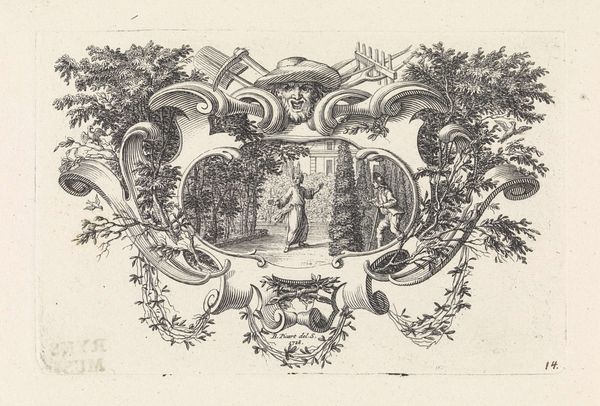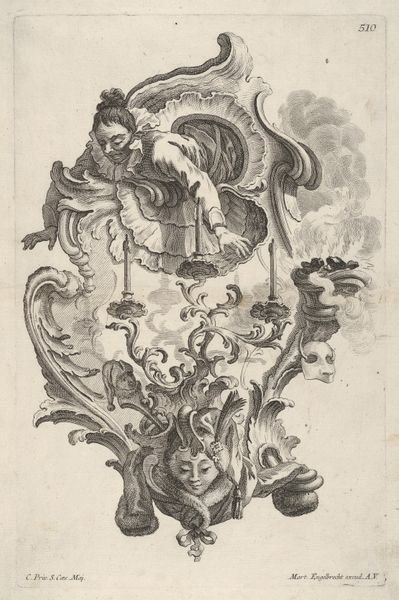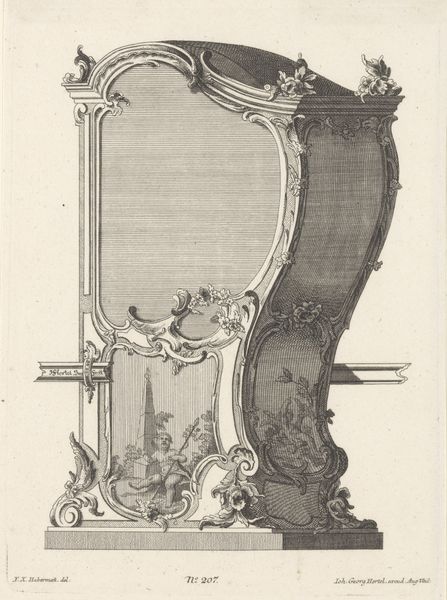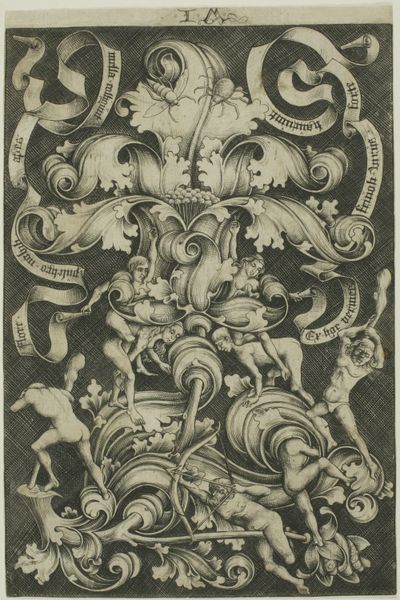
Rocaille met de personificatie van de Bouwkunst (Architectura) 1719 - 1749
0:00
0:00
jeremiaswachsmuth
Rijksmuseum
engraving, architecture
#
allegory
#
baroque
#
figuration
#
line
#
history-painting
#
engraving
#
architecture
Dimensions: height 282 mm, width 200 mm
Copyright: Rijks Museum: Open Domain
This print, Rocaille with the Personification of Architecture, was made by Jeremias Wachsmuth in the 18th century. It’s an etching, a process that involves covering a metal plate with wax, scratching an image into it, and then bathing the plate in acid. The acid bites away the exposed metal, creating lines that hold ink. Here, that intaglio process yields a complex Rococo composition, a riot of swirling forms. Note how this aesthetic relies on skilled labor; every flourish had to be carefully inscribed into the plate. We see putti pulling ropes connected to classical columns, as a female figure – the allegory of architecture – rests with her instruments. The print is both an advertisement for architecture, and a testament to the skill required to produce the image itself. The design is attributed to I.W. Baumgartner; Wachsmuth was the one who actually made it. In that division of labor, we see the beginnings of industrial production, where design is separated from making. Consider how the status of the draughtsman and the printmaker might have been different, even unequal. The Rococo style, born of artisanal virtuosity, was beginning to be superseded by new modes of production – even as it celebrated the crafts.
Comments
No comments
Be the first to comment and join the conversation on the ultimate creative platform.
